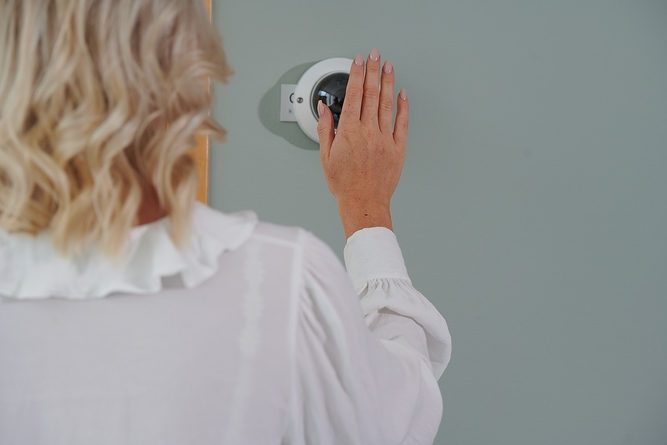
Interview: Physical access control in commercial buildings

What’s the latest in physical access security?
We see a clear shift: physical access is now part of the broader security agenda and tightly linked to cybersecurity. The gap between physical and digital protection is gone — both must be secured. Stronger requirements are driving the rise of multi-factor authentication (MFA) for access, and the days of sharing PINs or borrowing cards are over. Just as important is usability: if systems are a hassle, people find shortcuts. Today, convenience, security, and compliance must go hand in hand.
What are the biggest pain points for stakeholders?
Most organizations already run an access system — sometimes a legacy one. Replacing it entirely is costly. The key is integration: adding modern, secure, and user-friendly solutions on top of existing systems to reduce cost and complexity while delivering stronger security and better user experience.
Why biometrics for physical access?
Because it uniquely combines security and usability. A biometric credential can’t be lost, forgotten, or shared like a card or PIN. At the same time, it gives users a seamless experience: just show your face or palm, and you’re in. Biometrics also enable MFA — for example combining palm recognition with a PIN — for situations requiring extra assurance.
Are companies using biometrics today?
Yes. According to a research report from the company HID (1), 39% of organizations in North America and Europe are already actively using biometrics for physical access control. That shows strong trust in the technology — and a huge potential for further growth.
How is Precise relevant and unique in this area?
Our biometric access solution, Precise Access, enables biometric access to commercial buildings using face or palm recognition — seamlessly integrated with the most common physical access systems. We also provide biometric MFA for enterprise access, using palm, face or fingerprint recognition. The key is easy integration, strong security, and a user experience people actually like. Personally, I believe palm recognition will become the winner in many cases in the future: it combines the best of finger and face — intentional, secure, hygienic, and sometimes less controversial from a privacy perspective.

How do biometrics comply with privacy regulations?
Privacy is absolutely key. While some regulations haven’t fully caught up with today’s technology evolution or security climate and may question biometrics for office access, properly implemented solutions comply fully with privacy requirements. Security is always a balance between protection, usability, and compliance — and when done right, biometrics enhance both security and trust.
What’s your outlook for Precise in physical access?
The potential is huge. We already have a strong position with proven, trusted solutions. As more organizations adopt MFA and unify physical and digital security, Precise is ideally placed to deliver. Biometrics will move from nice-to-have to must-have in physical access in the coming years.
How will physical access evolve over the next five years?
It will move to the cloud and converge further with cybersecurity. We’ll see truly frictionless experiences — no cards, no PINs, just recognition. At the same time, MFA will become the default, balancing convenience with the highest security standards.
What advice would you give a security manager evaluating biometrics?
Focus on integration and adoption. Pick a solution that works with your existing system — replacing everything is costly. Start with a pilot, measure results, and involve employees early. If people find it easy and secure, adoption will follow naturally.
(1) HID State of Physical Access Trend report 2024

Discover the full potential of biometrics in access control
From stronger security to seamless user experiences.
See more